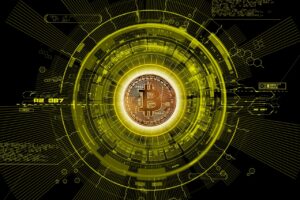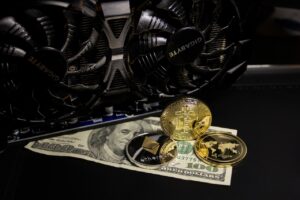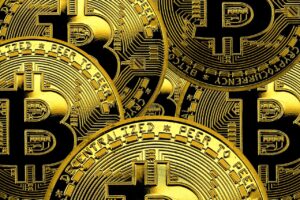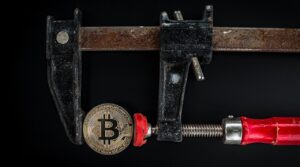NFTs and DeFi: The Intersection of Two Crypto Trends
NFTs and DeFi: The Intersection of Two Crypto Trends
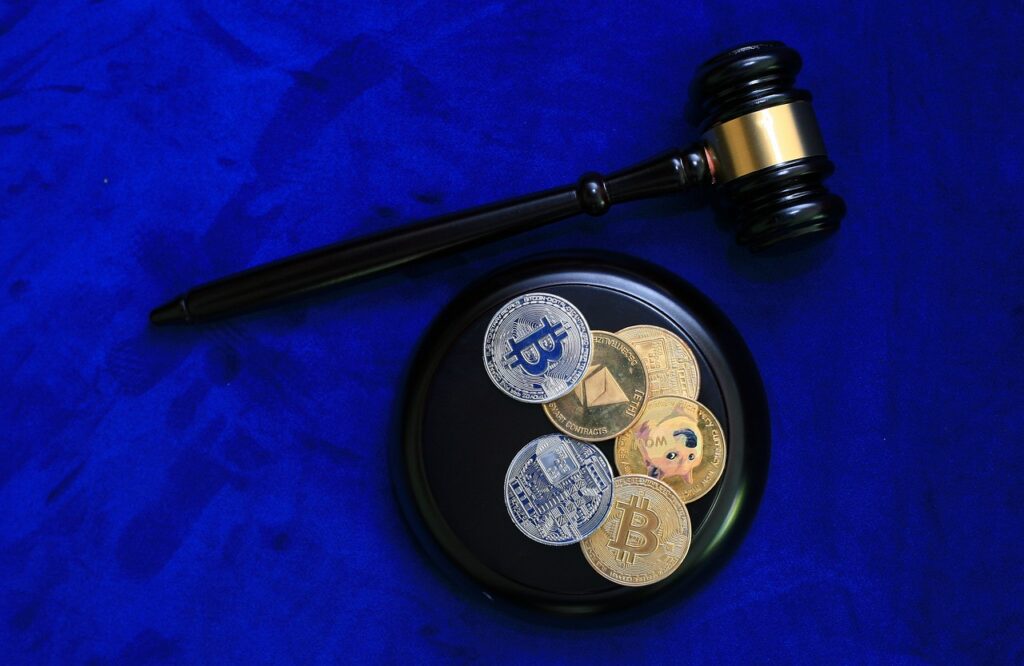
Exploring the Convergence of Digital Art and Decentralized Finance
The convergence of digital art and decentralized finance has opened up new possibilities for artists, collectors, and investors alike. With the rise of blockchain technology, digital artworks can now be tokenized as non-fungible tokens (NFTs) and traded on decentralized platforms. This intersection between art and finance brings forth unique opportunities to revolutionize the way we perceive, create, buy, and sell artwork.
One of the key advantages of this convergence is the ability to establish provenance and authenticity in the digital realm. Through blockchain technology, each NFT represents a unique piece of artwork that cannot be replicated or tampered with. This provides artists with a secure way to protect their intellectual property rights while also ensuring transparency for buyers. Additionally, by leveraging smart contracts on decentralized platforms, artists can receive royalties every time their NFTs are sold or traded in secondary markets.
Moreover, this merging of art and finance has sparked a vibrant ecosystem where creators can directly engage with their audience through social media platforms or dedicated marketplaces. Artists no longer have to rely solely on traditional gatekeepers such as galleries or auction houses to showcase their work. Instead, they can build direct relationships with collectors who appreciate their artistic vision. Furthermore, investors now have access to an entirely new asset class that holds both aesthetic value and potential financial returns.
As we continue exploring the convergence of digital art and decentralized finance, it becomes evident that this trend is reshaping not only how we perceive art but also how we interact with it financially. The fusion of these two worlds opens up avenues for creativity while providing economic empowerment for artists globally. Whether you are an artist seeking recognition or an investor looking for alternative assets to diversify your portfolio – paying attention to this evolving landscape could prove beneficial in navigating the future intersections between artistry and financial innovation
The Rise of Non-Fungible Tokens in the Crypto Landscape
Non-fungible tokens (NFTs) have been gaining significant attention and popularity in the crypto landscape. Unlike cryptocurrencies such as Bitcoin or Ethereum, which are interchangeable with one another, NFTs represent unique assets that cannot be replicated or replaced. These digital tokens have opened up a whole new world of possibilities for artists, creators, and collectors.
One of the key reasons behind the rise of NFTs is their ability to provide proof of ownership and authenticity in the digital realm. With traditional art or collectibles, it can be challenging to verify if an item is genuine or has been reproduced. However, NFTs solve this problem by utilizing blockchain technology to create a transparent and immutable record of ownership. This scarcity factor adds value to these digital assets and has attracted both investors and enthusiasts alike.
Another driving force behind the popularity of NFTs is their potential for creating new revenue streams for artists and content creators. By tokenizing their work as NFTs, artists can directly sell their creations without relying on intermediaries like galleries or auction houses. Additionally, they can also earn royalties every time their artwork gets resold in secondary markets. This democratization of art ownership has empowered artists while revolutionizing how we perceive and consume digital art.
The rise of non-fungible tokens marks a significant shift towards embracing uniqueness and individuality in the crypto landscape. As more industries explore the potential applications of NFTs beyond just art, we are witnessing an exciting convergence between creativity and finance that could reshape various sectors from gaming to real estate. With continued innovation in decentralized finance (DeFi) platforms supporting NFT trading and ownership, it’s clear that this trend is here to stay – transforming not only how we interact with digital assets but also our understanding of value itself.n
Understanding the Basics of DeFi: Decentralized Finance
Decentralized Finance, commonly known as DeFi, is a rapidly emerging field in the world of cryptocurrencies. Unlike traditional financial systems that rely on intermediaries like banks and brokers, DeFi operates on decentralized networks such as blockchain technology. This allows for a more inclusive and transparent financial ecosystem where individuals can access various financial services without relying on centralized authorities.
One of the key features of DeFi is its ability to provide users with greater control over their assets. Through smart contracts, which are self-executing agreements written in code, users can interact directly with decentralized applications (DApps) to lend, borrow, trade or invest their digital assets. These transactions occur automatically and securely without the need for intermediaries.
Another important aspect of DeFi is its potential to foster financial inclusion by providing access to financial services for individuals who are unbanked or underbanked. In many parts of the world, traditional banking services may be inaccessible or too expensive for certain populations. With DeFi platforms, anyone with an internet connection can participate in activities such as lending or earning interest on their assets.
As this nascent industry continues to evolve and mature, it is important for users to understand the risks associated with participating in DeFi protocols. While decentralization offers numerous advantages like increased security and transparency, it also introduces new vulnerabilities that hackers may exploit. It’s crucial for users to exercise caution when interacting with unfamiliar projects and conduct thorough research before investing or engaging in any transactions within the DeFi space.
In conclusion,
Understanding the basics of Decentralized Finance (DeFi) provides valuable insights into how this emerging field operates outside traditional financial systems.
By leveraging blockchain technology and smart contracts,
DeFi aims at creating a more inclusive and transparent financial ecosystem where individuals have greater control over their assets.
However,
it’s essential for participants to remain cautious due to inherent risks associated with decentralized platforms
Unpacking the Concept of Non-Fungible Tokens (NFTs)
Non-Fungible Tokens (NFTs) have emerged as a groundbreaking concept within the world of cryptocurrency. Unlike traditional cryptocurrencies such as Bitcoin or Ethereum, NFTs are unique and indivisible digital assets that represent ownership or proof of authenticity for a specific item or piece of content. This uniqueness is what sets NFTs apart from other tokens in the crypto landscape.
One key aspect to understand about NFTs is their ability to be stored on blockchain technology, which ensures transparency and immutability. Each NFT contains metadata that provides detailed information about its origin, creator, and history. This metadata serves as a certificate of authenticity, making it possible to verify the originality and ownership of an NFT.
The value proposition of NFTs lies in their scarcity and authenticity within the digital realm. With limited supply and provable uniqueness, collectors are willing to pay high prices for these one-of-a-kind digital assets. Artists can also benefit greatly from this concept by monetizing their creations directly through tokenization, eliminating intermediaries while maintaining control over their work’s distribution.
As we delve deeper into the world of Non-Fungible Tokens (NFTs), it becomes evident that they offer immense potential for various industries beyond just art or collectibles. From music albums to virtual real estate in gaming worlds, any form of unique digital content can be transformed into an NFT with its own market value. The possibilities seem endless as more creators embrace this innovative technology and explore new ways to leverage its benefits.
(Note: To maintain coherence between paragraphs without using conjunctive adverbs like “Furthermore” or “Moreover,” I would suggest adding transitional phrases at the beginning of each paragraph.)
The Value Proposition of NFTs: Scarcity and Authenticity in the Digital Realm
NFTs, or non-fungible tokens, have gained significant attention in the digital realm due to their unique value proposition.

Moreover, authenticity plays a crucial role in the value proposition of NFTs. With the rise of digital art and other forms of creative expression in the online world, proving ownership and originality has become increasingly important. NFTs solve this problem by utilizing blockchain technology to provide immutable records of ownership and provenance for digital assets. This means that buyers can have confidence in knowing that they are purchasing an authentic piece of artwork or any other digitally represented item.
The combination of scarcity and authenticity creates a powerful value proposition for NFTs in the digital realm. Collectors are drawn to owning something unique that holds inherent value due to its limited supply, while creators benefit from being able to monetize their work directly without intermediaries diluting their earnings. As more industries explore the potential applications for NFTs beyond art, such as music rights or virtual real estate ownership, we can expect this value proposition to continue evolving with new opportunities emerging on decentralized platforms.
DeFi and NFTs: How the Two Crypto Trends Complement Each Other
DeFi and NFTs have emerged as two prominent trends in the crypto space, each bringing unique advantages to the table.

One key aspect where DeFi and NFTs converge is in their ability to enhance liquidity within the crypto ecosystem. DeFi protocols enable users to lend or borrow cryptocurrencies, creating opportunities for investors to unlock value from their holdings. By integrating NFTs into these protocols, individuals can leverage their unique digital assets as collateral for loans or participate in decentralized marketplaces that allow fractional ownership of high-value collectibles. This integration not only expands liquidity options but also opens up avenues for monetizing digital creations.
Moreover, DeFi’s infrastructure provides a solid foundation for secure and transparent transactions involving NFTs. Smart contracts play a crucial role here by automating processes such as issuing tokens, verifying ownership rights, and facilitating peer-to-peer exchanges with minimal trust requirements. As DeFi continues to evolve with advancements like cross-chain interoperability and improved scalability solutions, it will further streamline the trading experience for NFT enthusiasts while maintaining robust security measures.
In this symbiotic relationship between DeFi and NFTs lies immense potential for innovation across various industries beyond art and collectibles alone. The fusion of decentralized finance principles with non-fungible tokens has already begun revolutionizing gaming economies by enabling players to truly own in-game assets that hold real-world value. Additionally, tokenization of real-world assets through NFTs backed by DeFi mechanisms could bridge traditional finance systems with the crypto realm – allowing fractional ownership of properties or even investment portfolios accessible to a wider audience.
As DeFi and NFTs continue to mature, their convergence presents a compelling landscape for investors, creators, and enthusiasts alike. The integration of decentralized finance principles into the world of non-fungible tokens not only enhances liquidity options but also provides a secure framework for transactions. This synergy extends beyond art and collectibles, promising to reshape industries such as gaming and traditional finance. With ongoing technological advancements and growing adoption, the future holds exciting possibilities for these two crypto trends working in harmony.
Leveraging DeFi to Enhance NFT Ownership and Trading
DeFi, or decentralized finance, has emerged as a powerful tool to enhance the ownership and trading of non-fungible tokens (NFTs). By leveraging DeFi protocols and platforms, NFT holders can unlock new opportunities and benefits in the digital asset space.
One way DeFi enhances NFT ownership is through fractionalization. With fractionalization, an NFT can be divided into smaller units called “fractionalized tokens.” This allows multiple investors to own a portion of the NFT, enabling broader participation in high-value assets that may have been otherwise inaccessible. Fractionalized NFTs also provide liquidity options for owners who want to sell only a fraction of their asset while retaining partial ownership.
Additionally, DeFi lending protocols enable NFT owners to utilize their digital assets as collateral for loans. By locking up their NFTs in smart contracts on these platforms, individuals can borrow funds without having to sell their valuable collectibles. This opens up possibilities for using NFTs as collateral within the decentralized financial ecosystem and provides alternative financing options for creators and collectors alike.
Furthermore, DeFi platforms offer innovative mechanisms such as automated market makers (AMMs) that facilitate efficient trading of NFTs. These AMMs use algorithms to determine prices based on supply and demand dynamics, ensuring fair value discovery for both buyers and sellers. By integrating with AMMs specifically designed for NFT trading, users gain access to liquid markets where they can easily buy or sell their digital assets without relying solely on traditional centralized exchanges.
Leveraging DeFi protocols not only enhances the accessibility and liquidity of NFT ownership but also expands the possibilities within this emerging market segment. As technology continues to evolve at a rapid pace, we are likely to witness further advancements that will shape how we interact with both DeFi and NFT ecosystems going forward
NFT Marketplaces: The Gateway to Discovering and Trading Digital Assets
NFT marketplaces play a crucial role in the world of digital assets, serving as the primary platforms for discovering and trading non-fungible tokens. These online marketplaces act as intermediaries between creators and buyers, providing a space where unique digital items can be showcased, evaluated, and exchanged. With their user-friendly interfaces and intuitive navigation systems, NFT marketplaces have become the go-to destinations for artists, collectors, and enthusiasts alike.
One of the key advantages of NFT marketplaces is their ability to offer a wide variety of digital assets across different categories. From artwork and collectibles to virtual real estate and domain names, these platforms cater to diverse interests within the crypto community. Moreover, they provide valuable exposure for artists by showcasing their work on a global scale. This accessibility has democratized the art world by allowing emerging talent to gain recognition without traditional gatekeepers.
In addition to facilitating transactions, NFT marketplaces also prioritize security and authenticity.

Tokenization of Real-World Assets: Bridging Traditional Finance and Crypto
Tokenization of real-world assets is a groundbreaking concept that aims to bridge the gap between traditional finance and the world of cryptocurrency. By tokenizing tangible assets such as real estate, art, or even commodities, these assets can be represented digitally on a blockchain network. This process allows for increased liquidity, fractional ownership, and easier transferability of traditionally illiquid assets.
One of the key advantages of tokenizing real-world assets is the democratization of investment opportunities. Previously, investing in high-value assets like real estate required significant capital and access to specialized markets. However, by breaking down these assets into smaller digital tokens, individuals with lower financial resources can now participate in owning fractions of valuable properties or artworks.
Moreover, tokenization brings transparency and efficiency to traditional asset markets. By leveraging blockchain technology’s immutable nature and smart contracts’ automation capabilities, transactions can be executed seamlessly without intermediaries while ensuring security and trust among participants. Additionally, this process enables faster settlement times compared to traditional systems that often involve lengthy paperwork processes.
The potential impact of tokenized real-world assets extends beyond just financial markets; it has implications for various industries such as supply chain management and intellectual property rights. For instance, by representing physical goods on a blockchain through tokens tied to their ownership rights or provenance information ensures authenticity and reduces counterfeiting risks.
As we delve deeper into exploring the convergence between traditional finance and crypto through asset tokenization initiatives continue to emerge across different sectors worldwide—the future holds immense potential for unlocking new investment avenues while revolutionizing how we perceive value exchange in our increasingly digitized world.
• Tokenization of real-world assets bridges the gap between traditional finance and cryptocurrency.
• Tangible assets like real estate, art, and commodities can be represented digitally on a blockchain network.
• Tokenization allows for increased liquidity, fractional ownership, and easier transferability of traditionally illiquid assets.
• Democratizes investment opportunities by breaking down high-value assets into smaller digital tokens.
• Individuals with lower financial resources can now participate in owning fractions of valuable properties or artworks.
• Tokenization brings transparency and efficiency to traditional asset markets.
• Transactions can be executed seamlessly without intermediaries using blockchain technology’s immutable nature and smart contracts’ automation capabilities.
• Ensures security and trust among participants while enabling faster settlement times compared to traditional systems.
• Implications extend beyond financial markets to industries such as supply chain management and intellectual property rights.
• Representing physical goods on a blockchain through tokens ensures authenticity and reduces counterfeiting risks.
• Asset tokenization initiatives are emerging across different sectors worldwide.
• The future holds immense potential for unlocking new investment avenues while revolutionizing how we perceive value exchange in our increasingly digitized world.
Exploring the Potential Risks and Challenges in the NFT and DeFi Space
One potential risk in the NFT and DeFi space is the lack of regulation and oversight. Unlike traditional financial systems, decentralized finance operates outside of centralized institutions, which can make it difficult to enforce rules and protect investors. This lack of regulation opens up opportunities for scams, fraud, and market manipulation. Additionally, without clear guidelines or standards, it can be challenging for individuals to assess the legitimacy or value of certain NFTs or DeFi projects.
Another challenge is the volatility and unpredictability of both NFTs and DeFi investments. The crypto market as a whole is known for its extreme price fluctuations, which can result in significant gains but also substantial losses. This volatility is amplified when it comes to NFTs and DeFi projects since they often rely on speculative demand rather than underlying fundamentals. Investors need to carefully consider their risk tolerance before diving into these markets.
Furthermore, there are concerns about scalability issues within both NFTs and DeFi platforms. As interest in these sectors grows rapidly, blockchain networks may struggle to handle increased transaction volumes efficiently. Slow transaction times and high fees could deter users from participating in these markets or limit their ability to engage with certain assets or protocols effectively.
It’s important for participants in the NFT and DeFi space to stay informed about potential risks associated with investing in digital assets while remaining cautious about unregulated offerings. Understanding regulatory developments, conducting thorough research on projects before investing capital, diversifying portfolios across different asset classes within this space are some strategies that can help mitigate risks involved in this emerging sector.
NFTs and DeFi in the Gaming Industry: Revolutionizing In-Game Economies
The gaming industry is undergoing a transformative shift with the integration of Non-Fungible Tokens (NFTs) and Decentralized Finance (DeFi). These technologies are revolutionizing in-game economies by introducing new opportunities for players to truly own and monetize their virtual assets. NFTs, which represent unique digital items or collectibles, can now be bought, sold, and traded on blockchain-powered marketplaces. This allows gamers to have full ownership of their in-game purchases and even profit from them outside of the game environment.
With DeFi protocols entering the gaming space, players can leverage decentralized lending platforms to borrow against their NFT holdings. This opens up avenues for liquidity within the gaming ecosystem as players no longer need to sell their valuable assets to access funds. Instead, they can use these assets as collateral for loans or participate in yield farming strategies that generate passive income.
Moreover, integrating DeFi with NFTs enables developers to create innovative gameplay mechanics such as staking NFTs for rewards or creating decentralized autonomous organizations (DAOs) where players collectively govern in-game decisions. This not only enhances player engagement but also fosters a sense of community ownership within virtual worlds. As more games adopt these technologies, we can expect an evolution in how gamers interact with virtual economies and potentially even earn a living through playing games.
The Role of Smart Contracts in Facilitating NFT and DeFi Interactions
Smart contracts play a crucial role in facilitating the interaction between non-fungible tokens (NFTs) and decentralized finance (DeFi). These self-executing contracts are built on blockchain technology and automatically enforce the terms of an agreement, eliminating the need for intermediaries. By leveraging smart contracts, NFTs can be used as collateral in DeFi protocols, enabling users to unlock liquidity without selling their valuable digital assets.
One key benefit of using smart contracts is that they ensure transparency and immutability in NFT and DeFi transactions. The code within these contracts is visible to all participants, allowing for trustless interactions without relying on centralized authorities. This transparency helps prevent fraud and manipulation by providing a clear record of ownership and transaction history.
Additionally, smart contracts enable programmable functionality within NFTs and DeFi applications. They allow for the creation of complex rules and conditions that govern how assets are transferred or utilized. For example, a smart contract could dictate that royalties from the sale of an NFT automatically go to its original creator each time it changes hands. This programmability opens up new possibilities for artists, content creators, and investors alike.
In summary: Smart contracts serve as a foundational layer in facilitating the seamless integration between non-fungible tokens (NFTs) and decentralized finance (DeFi). With their ability to enforce agreements transparently while offering programmable functionalities, smart contracts provide increased security, efficiency, and innovation within this emerging space.
Future Outlook: The Evolving Landscape of NFTs and DeFi
The future outlook for the convergence of NFTs and DeFi is promising, as both technologies continue to evolve and gain traction in the digital landscape. As more artists and creators embrace NFTs as a means of monetizing their digital assets, we can expect to see an increase in the variety and quality of digital art available on decentralized marketplaces. Additionally, with the integration of DeFi protocols into NFT platforms, users will have enhanced ownership rights and greater liquidity options for their digital assets.
One area that holds immense potential is the tokenization of real-world assets through NFTs. This bridging between traditional finance and crypto has already begun with projects exploring fractional ownership of real estate or fine art through blockchain technology. In the future, we may witness a significant shift towards digitizing various tangible assets using NFTs, allowing for increased accessibility and investment opportunities.
Furthermore, as smart contracts become more sophisticated and versatile, they will play a crucial role in facilitating interactions between NFTs and DeFi protocols. Smart contracts enable automated transactions based on predefined conditions without relying on intermediaries or centralized authorities. This automation not only enhances efficiency but also ensures transparency within these ecosystems.
In summary, the evolving landscape of NFTs and DeFi presents exciting possibilities for artists, collectors, investors, and enthusiasts alike. The integration of decentralized finance into non-fungible tokens opens up new avenues for financial innovation while providing greater opportunities for individuals to engage with digital art securely. As technology continues to advance rapidly in this space, it’s essential to stay informed about emerging trends that shape this dynamic intersection between creativity and finance
What are NFTs and how do they differ from cryptocurrencies?
NFTs, or non-fungible tokens, are unique digital assets that utilize blockchain technology to establish ownership and provenance. Unlike cryptocurrencies such as Bitcoin or Ethereum, NFTs cannot be exchanged on a one-to-one basis, as each NFT has its own distinct characteristics and value.
How does decentralized finance (DeFi) relate to NFTs?
DeFi refers to the use of blockchain technology and decentralized networks to create financial instruments and services without the need for intermediaries. NFTs can be integrated into DeFi platforms, allowing users to leverage their digital assets as collateral, earn interest, and participate in decentralized lending and borrowing protocols.
What is the value proposition of NFTs?
NFTs provide digital artists and content creators with a way to monetize their work by establishing scarcity and authenticity in the digital realm. NFTs offer unique ownership rights and can be bought, sold, and traded on various online marketplaces.
How do NFTs and DeFi complement each other?
NFTs and DeFi complement each other by enabling the tokenization of digital assets and providing new opportunities for financial innovation. DeFi platforms can enhance the ownership and trading of NFTs by introducing features such as fractional ownership, lending, and yield farming.
What are some popular NFT marketplaces?
Some popular NFT marketplaces include OpenSea, Rarible, SuperRare, and NBA Top Shot. These platforms allow users to discover, buy, and sell a wide range of digital assets, including artwork, collectibles, and virtual real estate.
Can real-world assets be tokenized using NFTs?
Yes, real-world assets can be tokenized using NFTs, bridging the gap between traditional finance and the crypto world. This process involves representing physical assets, such as real estate or artwork, as digital tokens on the blockchain, enabling fractional ownership and liquidity.
What are the potential risks and challenges in the NFT and DeFi space?
Some potential risks and challenges in the NFT and DeFi space include regulatory uncertainties, market volatility, scalability issues, and the potential for fraudulent activity. It is important for investors and participants to conduct thorough research and exercise caution when engaging in these emerging markets.
How are NFTs and DeFi revolutionizing the gaming industry?
NFTs and DeFi are revolutionizing the gaming industry by introducing new economic models and monetization opportunities. Players can own and trade in-game assets as NFTs, while DeFi protocols enable decentralized in-game economies, allowing for more player autonomy and economic incentives.
What role do smart contracts play in NFT and DeFi interactions?
Smart contracts, self-executing agreements with predefined conditions written into code, play a crucial role in NFT and DeFi interactions. Smart contracts enable automation and enforce the terms of NFT ownership, as well as facilitate various DeFi functionalities such as lending, borrowing, and yield farming.
What does the future hold for NFTs and DeFi?
The future of NFTs and DeFi is likely to involve further innovation and integration within various industries. As blockchain technology continues to evolve and gain mainstream adoption, we can expect to see more creative use cases and opportunities for both NFTs and DeFi in the coming years.
Todays Featured Product:
Buy, exchange and grow your crypto securely with a Ledger hardware wallet, combined with the Ledger Live app. It’s never been easier to keep your crypto safe and accessible. Buy direct from Ledger.com and get todays Special Offers Here.
